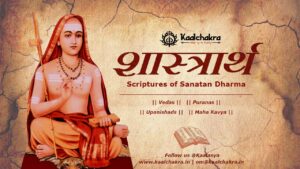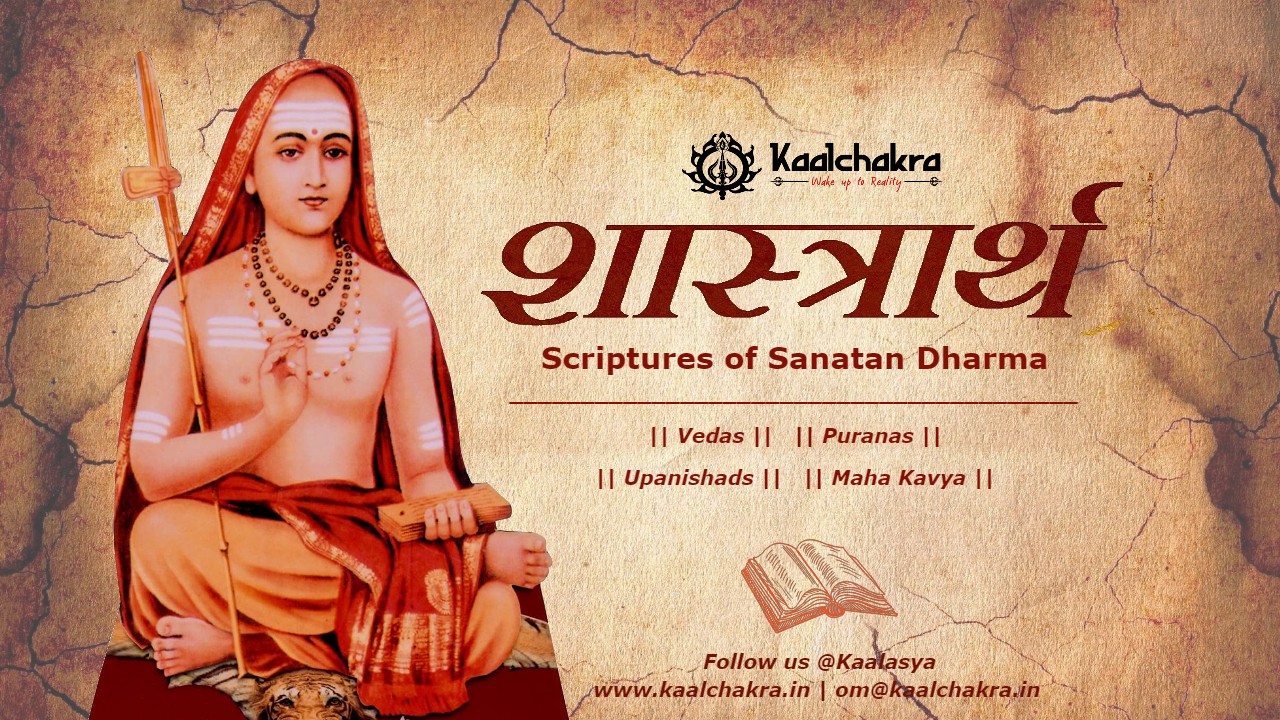-
अथर्ववेद: प्राचीन भारतीय ग्रंथों के गूढ़ ज्ञान का अनावरण

अथर्ववेद प्राचीन भारतीय ग्रंथों के गूढ़ ज्ञान का अनावरण परिचय : सनातन धर्म (हिंदू धर्म) के पवित्र ग्रंथों में से एक, अथर्ववेद की हमारी खोज में आपका स्वागत है। अथर्ववेद अन्य तीन वेदों से अलग है, जो उपचार, अनुष्ठान और आध्यात्मिकता सहित जीवन के विभिन्न पहलुओं पर एक अद्वितीय दृष्टिकोण प्रस्तुत करता है। इस व्यापक…
-
यजुर्वेद उपनिषद: अनुष्ठान और ज्ञानोदय को जोड़ना

यजुर्वेद उपनिषद अनुष्ठान और ज्ञानोदय को जोड़ना यजुर्वेद उपनिषद, यजुर्वेद के अनुष्ठानिक संरचना से उभरते हुए, बाहरी संस्कारों से गहन आध्यात्मिक अंतर्दृष्टि तक एक परिवर्तनकारी यात्रा प्रदान करते हैं। यह लेख यजुर्वेद उपनिषदों की विशिष्ट विशेषताओं, विषयों, संरचना और योगदान पर प्रकाश डालता है। इन ग्रंथों की खोज करके, हम वैदिक परंपरा के भीतर अनुष्ठानों…
-
अथर्ववेद ब्राह्मण: अनुष्ठान और व्यावहारिक ज्ञान के बीच का पुल

अथर्ववेद ब्राह्मण अनुष्ठान और व्यावहारिक ज्ञान के बीच का पुल अथर्ववेद ब्राह्मण, वैदिक साहित्य का एक अभिन्न अंग, अथर्ववेद में निहित अनुष्ठानों, जादुई प्रथाओं और व्यावहारिक ज्ञान में अद्वितीय अंतर्दृष्टि प्रदान करते हैं। यह लेख अथर्ववेद ब्राह्मणों की विशिष्ट विशेषताओं, विषयों, संरचना और योगदान की पड़ताल करता है। इन ग्रंथों में गहराई से जाकर, हम…
-
अथर्ववेद संहिता: रहस्यमय अंतर्दृष्टि और व्यावहारिक ज्ञान

अथर्ववेद संहिता रहस्यमय अंतर्दृष्टि और व्यावहारिक ज्ञान अथर्ववेद संहिता, स्त्रोत (स्तुति) और मंत्रों का एक संग्रह हैं। जो रहस्यमय अंतर्दृष्टि और व्यावहारिक ज्ञान से बुनी गई एक आकर्षक व्यवस्था के रूप में कार्य करता है। यह लेख अथर्ववेद संहिता की विशिष्ट विशेषताओं, विषयों, संरचना और महत्व पर प्रकाश डालता है। इन छंदों की खोज करके,…
-
अथर्ववेद उपनिषद: आंतरिक कीमिया और आध्यात्मिक रहस्योद्घाटन

अथर्ववेद उपनिषद आंतरिक कीमिया और आध्यात्मिक रहस्योद्घाटन अथर्ववेद के रहस्यमय संरचना से उभरे अथर्ववेद उपनिषद अस्तित्व की प्रकृति, उपचार और चेतना की शक्ति में गहन अंतर्दृष्टि प्रदान करते हैं। यह लेख अथर्ववेद उपनिषदों की विशिष्ट विशेषताओं, विषयों, संरचना और योगदान पर प्रकाश डालता है। इन ग्रंथों की खोज से, हम आध्यात्मिक ज्ञान और व्यावहारिक ज्ञान…
-
अथर्ववेद अरण्यक: रहस्यमय ज्ञान और व्यावहारिक अंतर्दृष्टि का अनावरण

अथर्ववेद अरण्यक रहस्यमय ज्ञान और व्यावहारिक अंतर्दृष्टि का अनावरण अथर्ववेद आरण्यक, अथर्ववेद की कर्मकांडीय प्रथाओं और उपनिषदों की दार्शनिक जांच के बीच एक पुल है, जो रहस्यवाद और व्यावहारिक ज्ञान का एक अनूठा मिश्रण प्रदान करता है। यह लेख अथर्ववेद आरण्यक की विशिष्ट विशेषताओं, विषयों, संरचना और योगदान पर प्रकाश डालता है। इन ग्रंथों की…
-
ऋग्वेद : दिव्य ज्ञान के प्राचीन स्त्रोत (स्तुति) का अनावरण

ऋग्वेद दिव्य ज्ञान के प्राचीन स्त्रोत (स्तुति) का अनावरण परिचय: सनातन धर्म (हिंदू धर्म) के सबसे पुराने और सबसे प्रतिष्ठित ग्रंथों में से एक, ऋग्वेद की हमारी खोज में आपका स्वागत है। ऋग्वेद, जिसे वैदिक साहित्य की नींव माना जाता है, में ऐसे स्त्रोत (स्तुति) शामिल हैं जो प्राचीन महर्षियों के आध्यात्मिक ज्ञान और दार्शनिक…
-
ऋग्वेद संहिता: मानव आध्यात्मिकता के सबसे पुराने एडडा की खोज

ऋग्वेद संहिता मानव आध्यात्मिकता के सबसे पुराने एडडा की खोज ऋग्वेद संहिता, वैदिक परंपरा में स्त्रोत (स्तुति) का सबसे पुराना और सबसे सम्मानित संग्रह, प्राचीन भारत की आध्यात्मिक चेतना में एक खिड़की के रूप में कार्य करता है। यह लेख ऋग्वेद संहिता की विशिष्ट विशेषताओं, विषयों, संरचना और महत्व पर प्रकाश डालता है। इन स्त्रोत…
-
ऋग्वेद आरण्यक: अनुष्ठान और आध्यात्मिक चिंतन को जोड़ना

ऋग्वेद आरण्यक अनुष्ठान और आध्यात्मिक चिंतन को जोड़ना कर्मकांडीय ब्राह्मणों और दार्शनिक उपनिषदों के बीच स्थित ऋग्वेद आरण्यक, बाहरी संस्कारों से आंतरिक चिंतन की ओर एक संक्रमण प्रदान करता है। यह लेख ऋग्वेद आरण्यक की विशिष्ट विशेषताओं, विषयों, संरचना और योगदान की पड़ताल करता है। इन ग्रंथों की गहराई में जाकर, हम प्रतीकवाद, ब्रह्मांड विज्ञान…
-
ऋग्वेद ब्राह्मण: प्राचीन स्त्रोत (स्तुति) के अनुष्ठानिक ज्ञान का अनावरण

ऋग्वेद ब्राह्मण प्राचीन स्त्रोत (स्तुति) के अनुष्ठानिक ज्ञान का अनावरण ऋग्वेद ब्राह्मण, वैदिक साहित्य का एक महत्वपूर्ण घटक, ऋग्वेद के स्त्रोत (स्तुति) से जुड़े अनुष्ठानों, समारोहों और दार्शनिक आयामों में मूल्यवान अंतर्दृष्टि प्रदान करते हैं। यह लेख ऋग्वेद ब्राह्मणों की विशिष्ट विशेषताओं, विषयों, संरचना और योगदान पर प्रकाश डालता है। इन ग्रंथों की जांच करने…
-
ऋग्वेद उपनिषद: स्त्रोत (स्तुति) के भीतर गूढ़ ज्ञान की खोज

ऋग्वेद उपनिषद स्त्रोत (स्तुति) के भीतर गूढ़ ज्ञान की खोज ऋग्वेद उपनिषद, वैदिक स्त्रोत (स्तुति) की गहराई में बसे, वास्तविकता की प्रकृति, स्वयं और परम सत्य में गहन अंतर्दृष्टि प्रदान करते हैं। यह लेख ऋग्वेद उपनिषदों की विशिष्ट विशेषताओं, विषयों, संरचना और योगदान पर प्रकाश डालता है। इन ग्रंथों की खोज करके, हम आध्यात्मिक ज्ञान…
-
पवित्र वेदों की खोज: सनातन धर्म का प्राचीन ज्ञान

पवित्र वेदों की खोज सनातन धर्म का प्राचीन ज्ञान परिचय: पवित्र वेदों की हमारी खोज में आपका स्वागत है, प्राचीन ग्रंथ जो सनातन धर्म (हिंदू धर्म) की नींव बनाते हैं। वेदों को दुनिया का सबसे पुराना धार्मिक ग्रंथ माना जाता है और दिव्य ज्ञान और आध्यात्मिक अंतर्दृष्टि के भंडार के रूप में हजारों वर्षों से…

Ocean of Wisdom
Read the Blog Content of Kaalchakra, From Here…